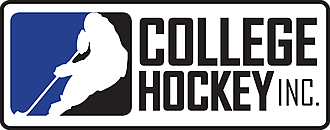Ideal Hockey Player Development
College hockey offers a unique environment that promotes the very best player development. Whether a player needs work on skating, skills, strength, or any other elements in their game, they’ll find the support, instruction and time they need in the college environment.
Coaching

NCAA hockey has, arguably, the finest collection of knowledgeable, experienced, accomplished coaches in the world outside of the NHL – and in many cases, they stack up well with their professional colleagues. These coaches have been through the college experience and are well-versed in the challenges and tribulations that their student-athletes will face. They are constantly striving to improve the college game and experience both collectively, through the American Hockey Coaches Association, and individually, with their team staff and university personnel.
“The hockey, and how you are treated, will never be this great again.” – Minnesota alum and three-time Olympian Natalie Darwitz
Facilities

State-of-the-art, professional-caliber facilities are found throughout Division I college hockey. Schools are constantly upgrading their arenas – 15 new rinks have been built since 2010, with dozens more renovated – to give their players the best possible developmental environment. Weight rooms, training facilities, shooting bays, and video rooms are all common elements designed to help players reach their full potential.
“The reason I chose the NCAA is because I believe it’s the league that best prepares you for the NHL. It’s an amazing path. There’s special players there.” – Boston University alum and San Jose Sharks forward Macklin Celebrini, the 2024 Hobey Baker Memorial Award winner and No. 1 overall pick in the 2024 NHL Draft.
Time to Practice

The college game schedule, with games primarily on Friday and Saturday, provides ample time for on-ice practice instruction. For the aspiring Olympian or National Hockey League player, college hockey offers the ideal practice-to-game ratio to build skills and prepare for a career beyond the NCAA.
“What people don’t realize about college is that it’s not just about those games. Practices are a lot more competitive and, after practice, you’re in the gym almost every day.” – UMass alum and current Colorado Avalanche defenseman Cale Makar
Strength and Conditioning

Strength and conditioning are part of the year-round training programs of every NCAA Division I hockey program . In most cases, this means working one-on-one with full-time strength coaches with scheduled lifts both during and outside of the season. It’s not uncommon for players to add 20 pounds of lean muscle mass during their college careers, allowing for significant increases in on-ice speed, strength, power and explosiveness.
“The best thing about college hockey is by playing fewer games, you get to spend more time in the weight room. I’m a big guy, but I came out of high school with a lot to learn in terms of getting stronger and using my physicality on the ice. It was good for me to get to a point where I felt like I was one of the stronger guys in college, physically, before I turned pro. – UMass alum and New York Rangers defenseman Scott Morrow.
Games

College freshmen compete against older, stronger and faster opponents, accelerating their development. With the focus on two games a week, typically, college hockey provides an intensity level that is second to none. The characteristics emphasized in the college game – speed, skill, agility and endurance – mirror those qualities of today’s NHL player.
“I think it’s the closest league to professional hockey. You’re playing against 23-, 24-, 25-year-olds every weekend. If you want to grow as a player, it’s a great [level] to play on. Every weekend is a hard weekend.” – Michigan alum and New Jersey Devils defenseman Luke Hughes
